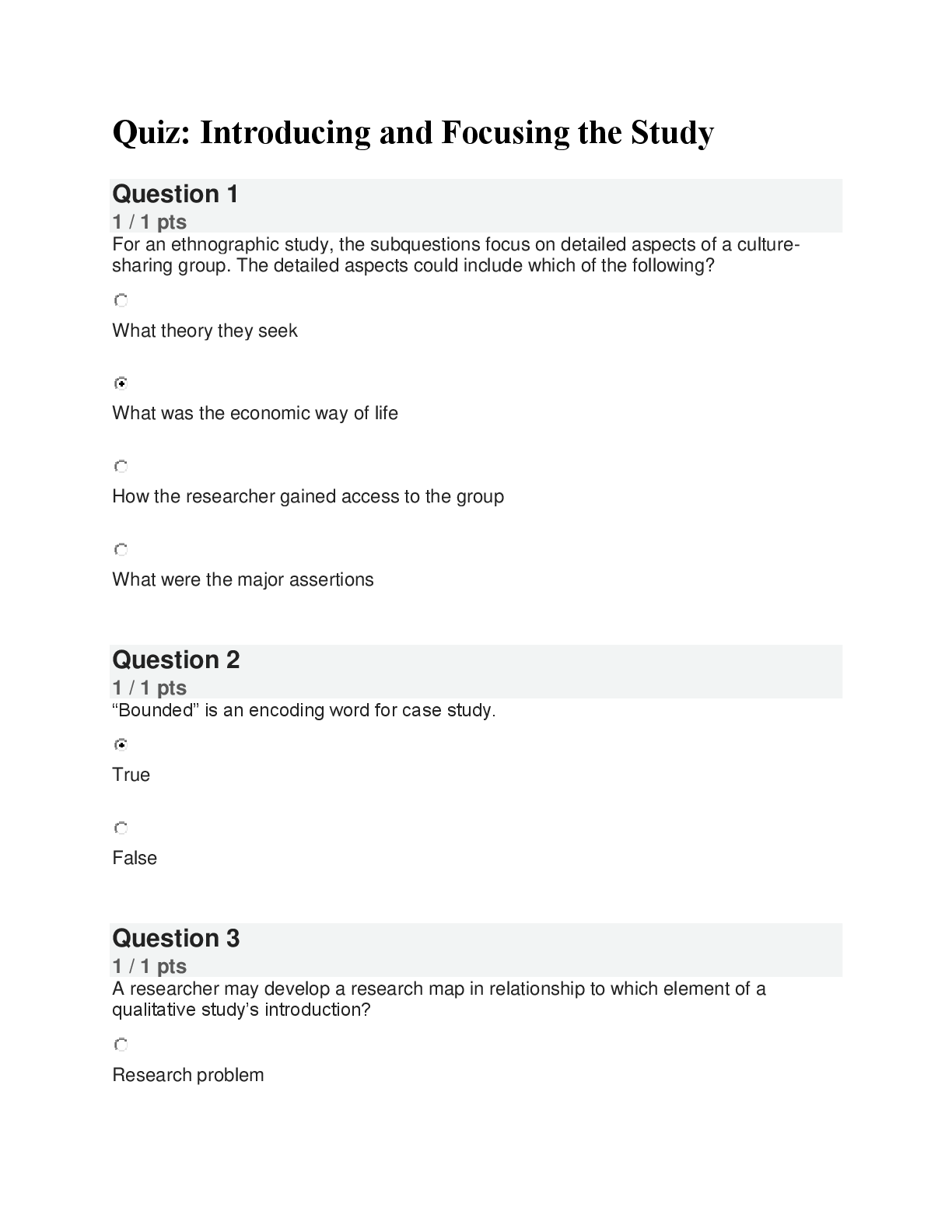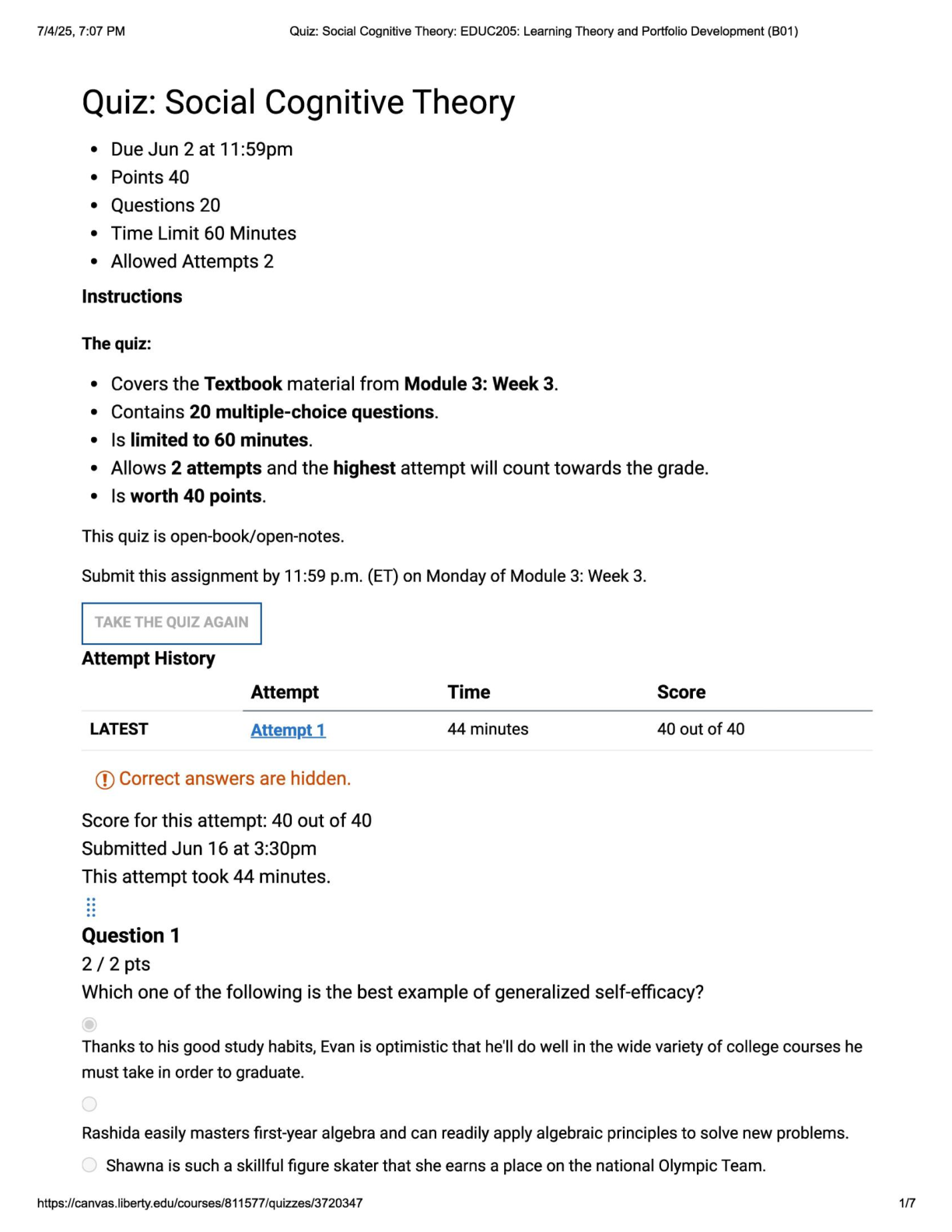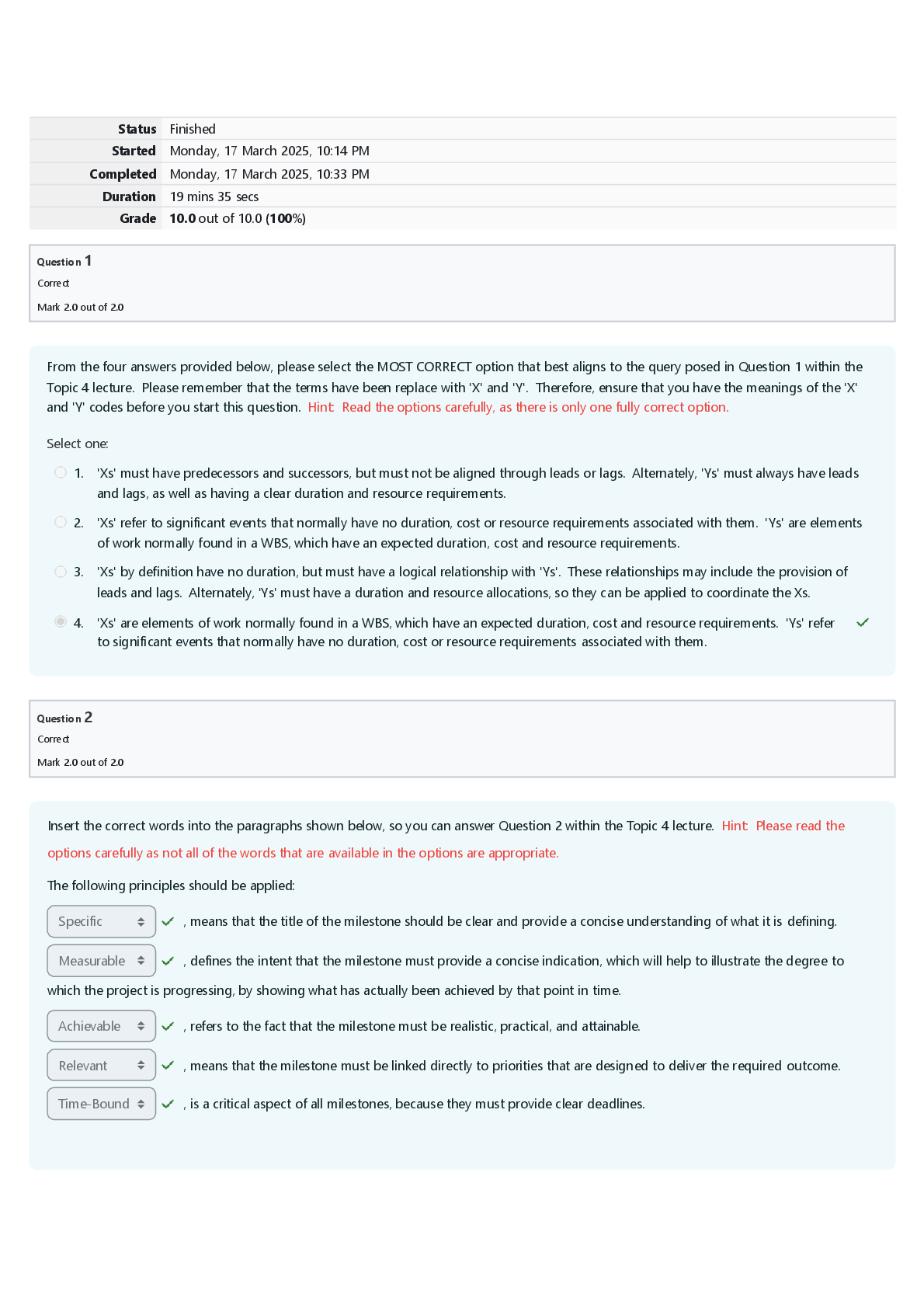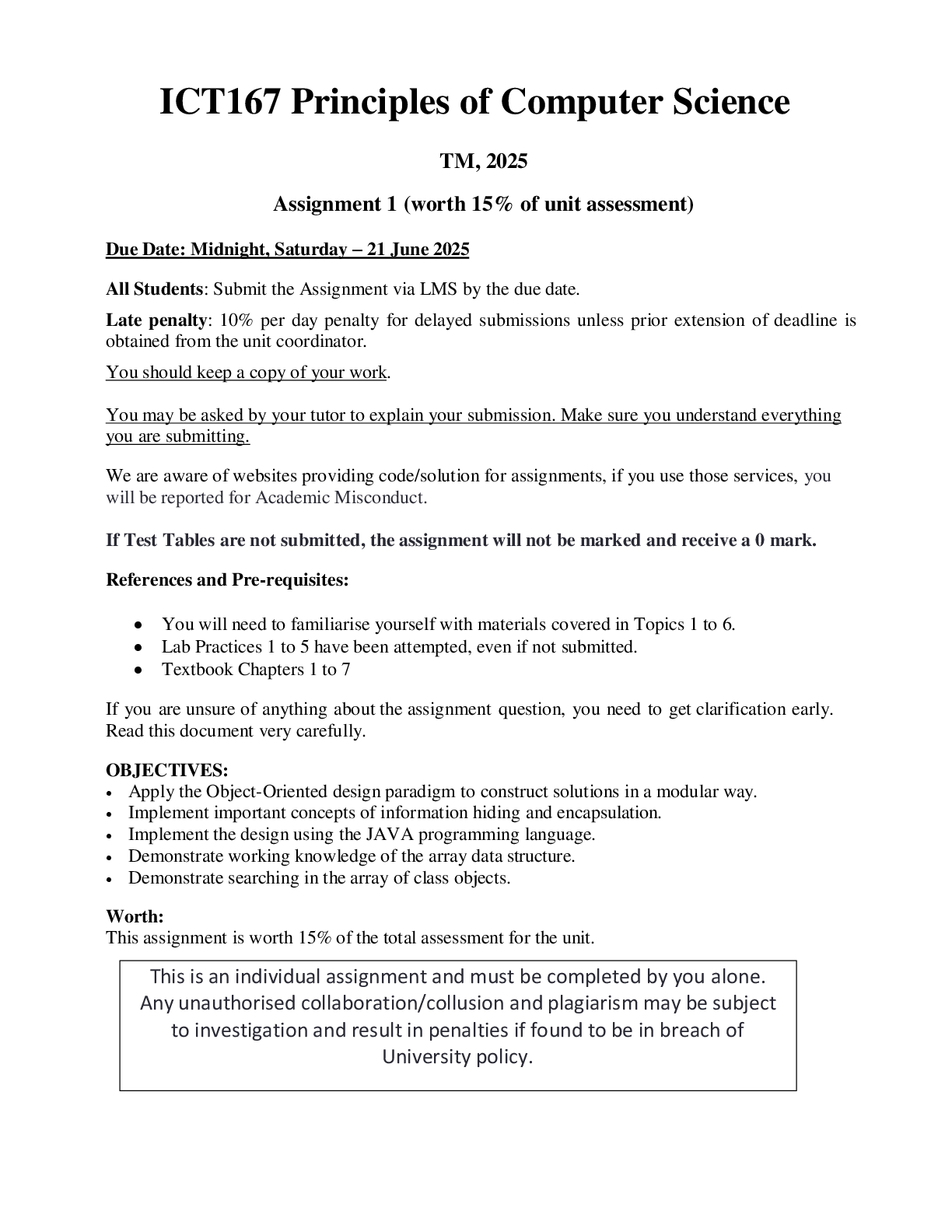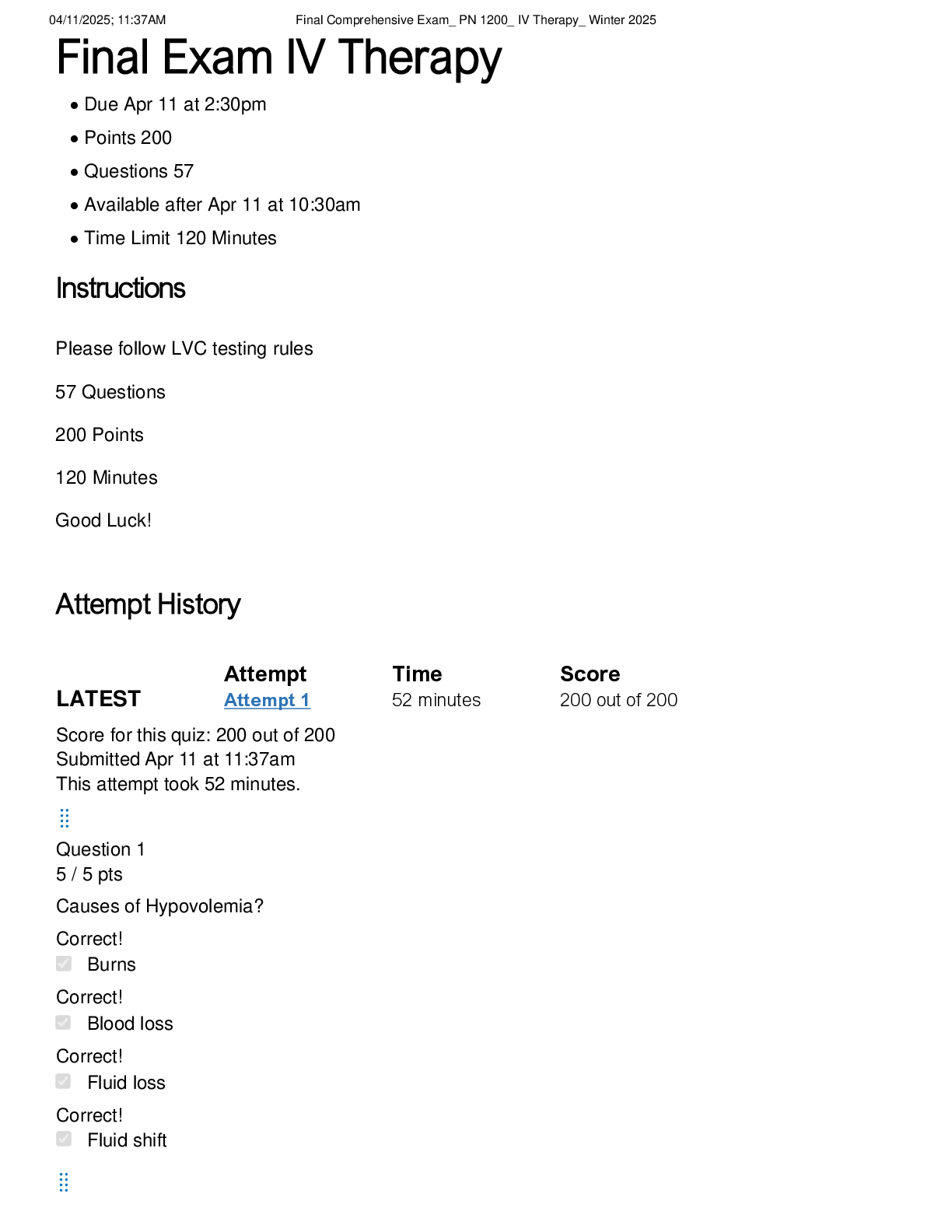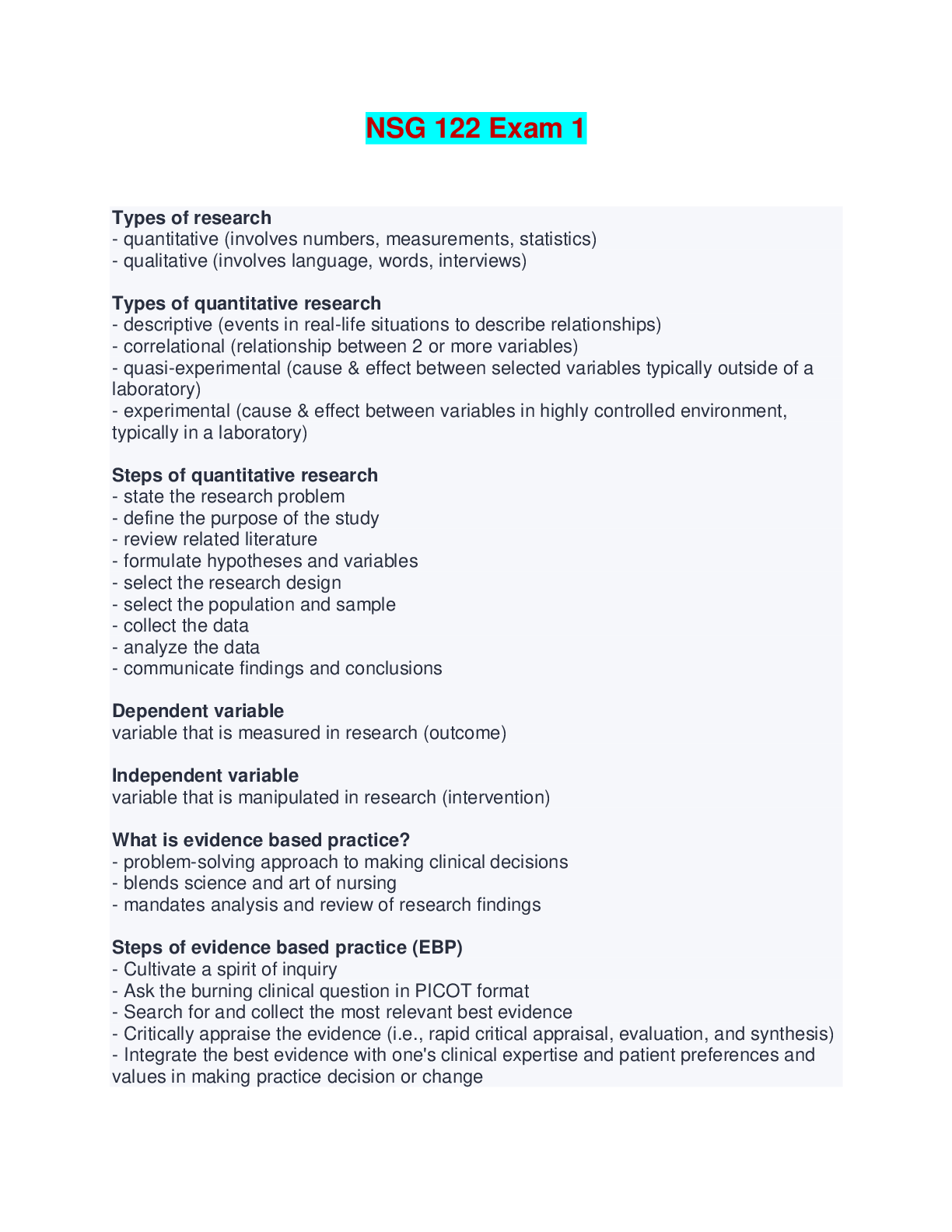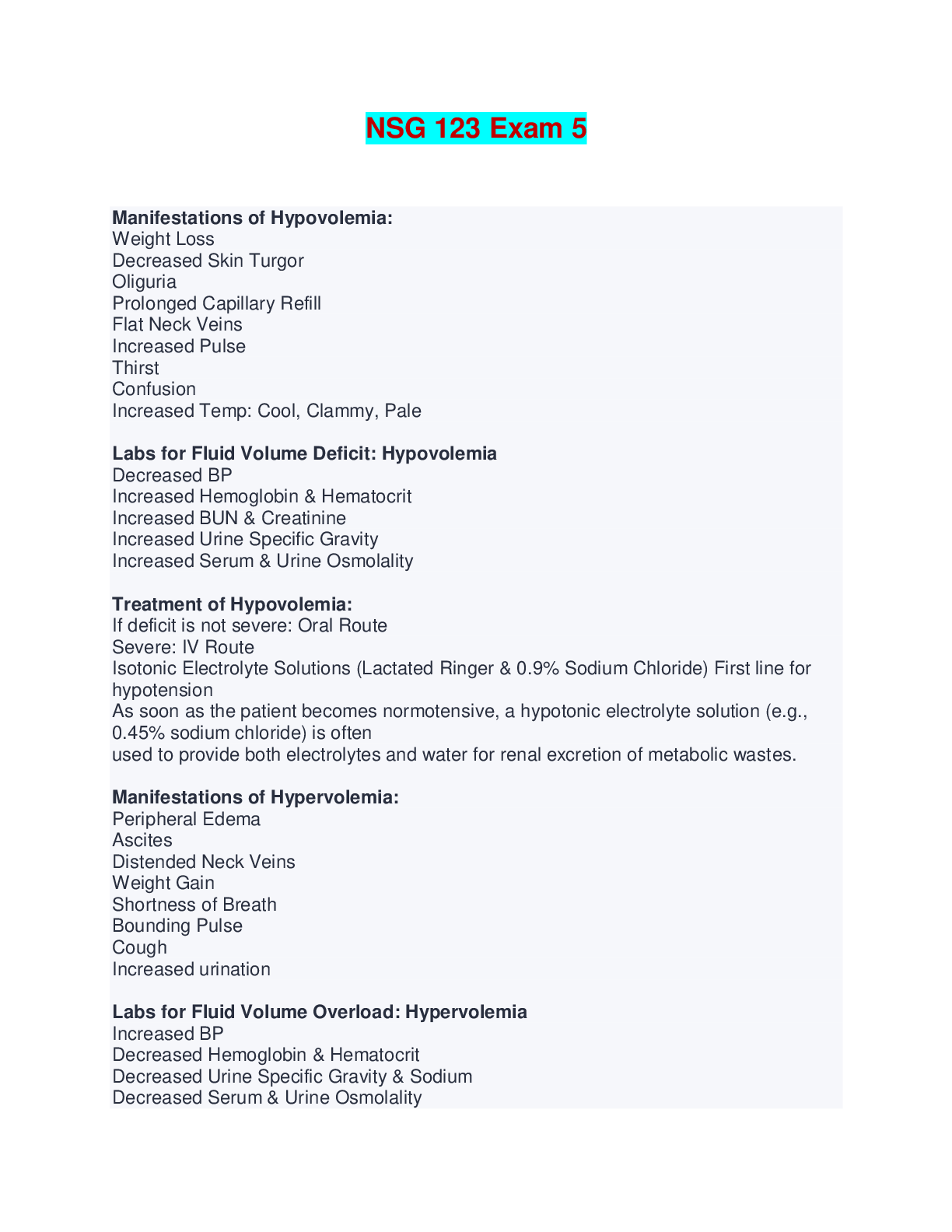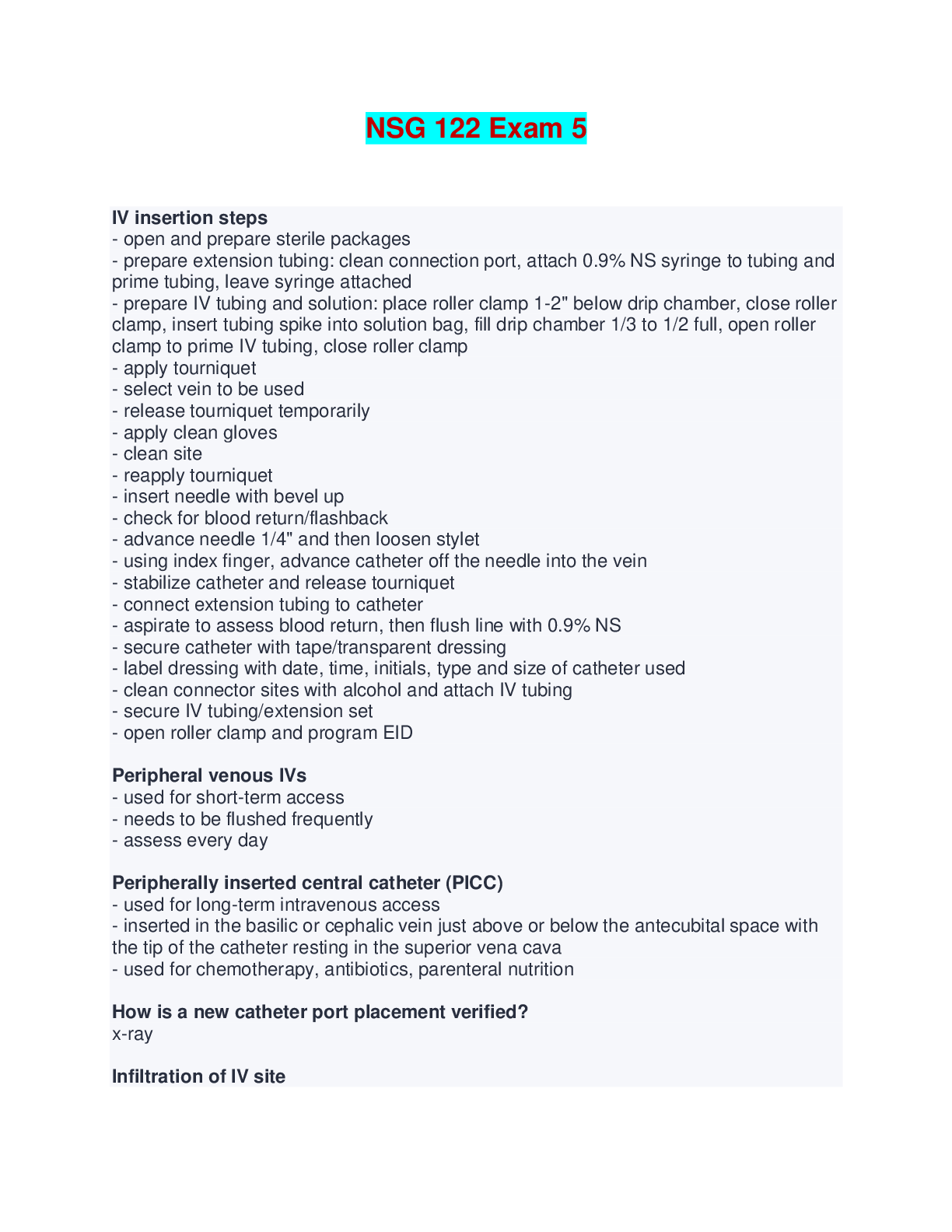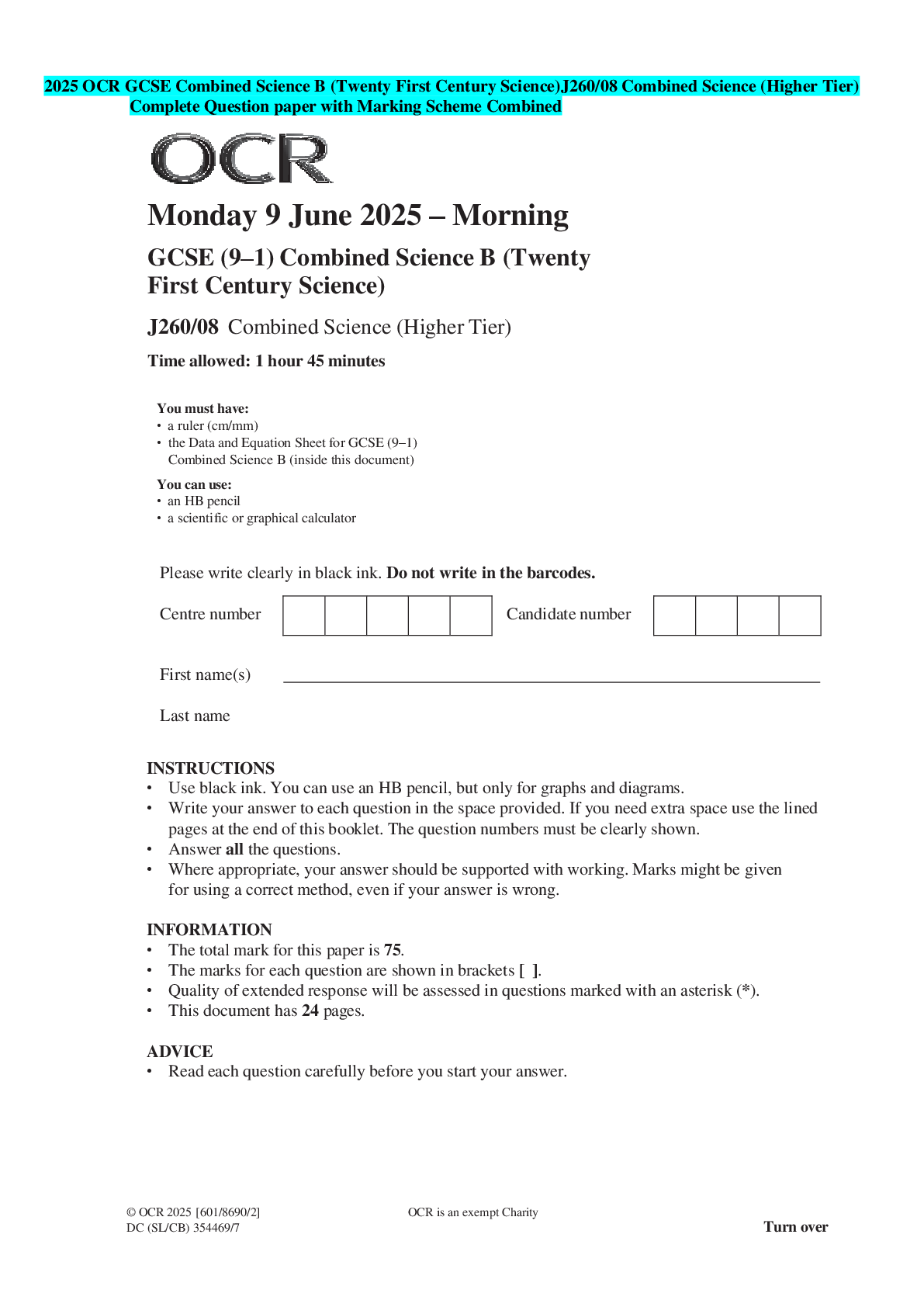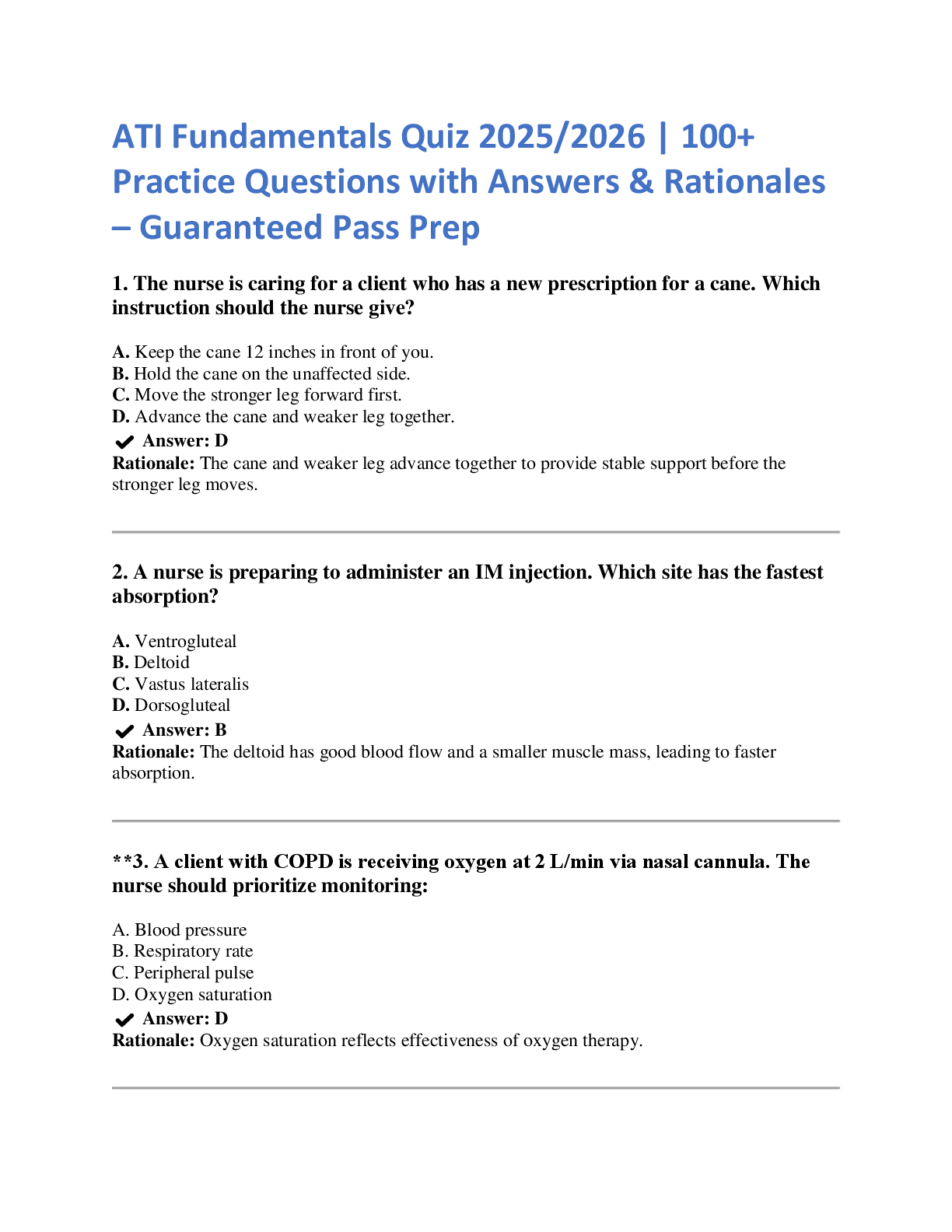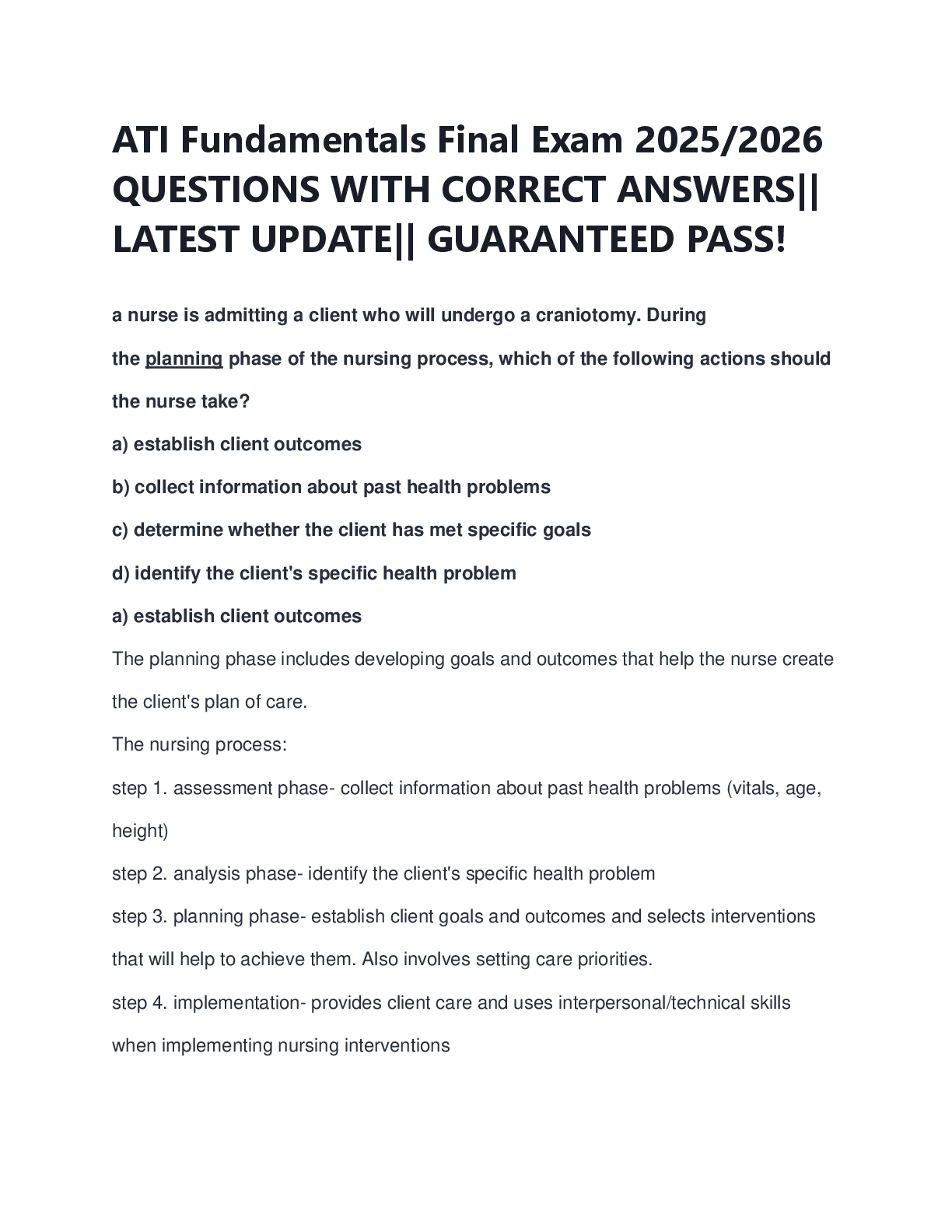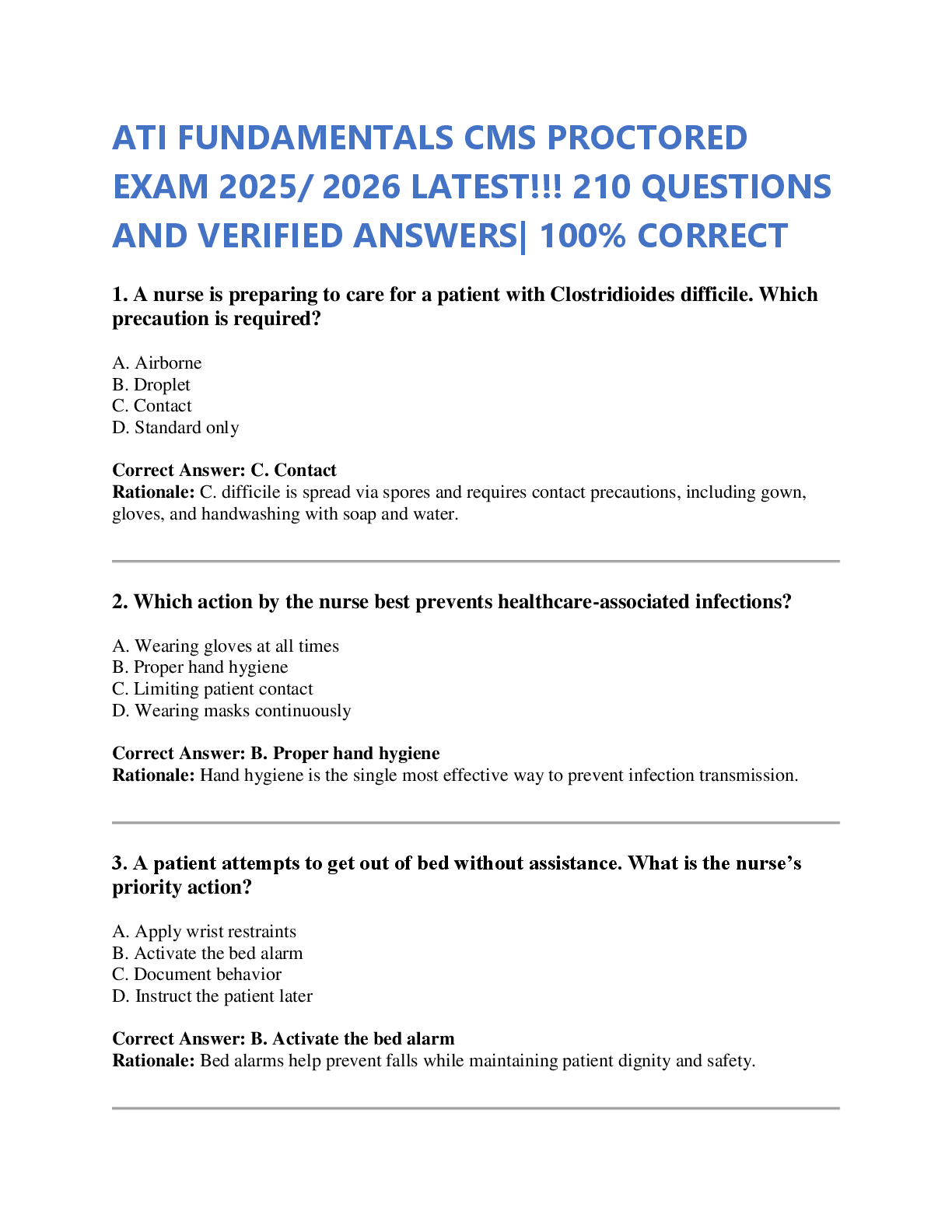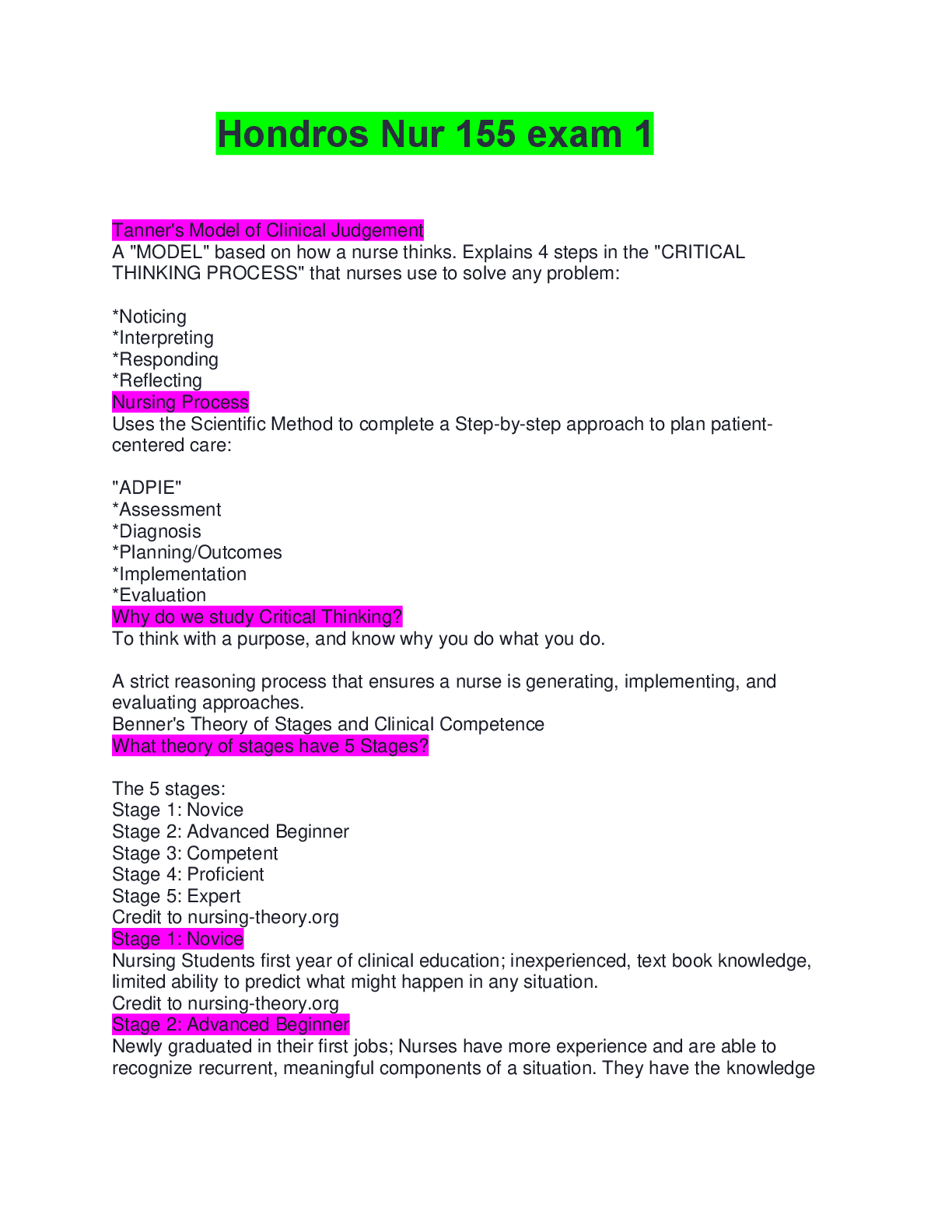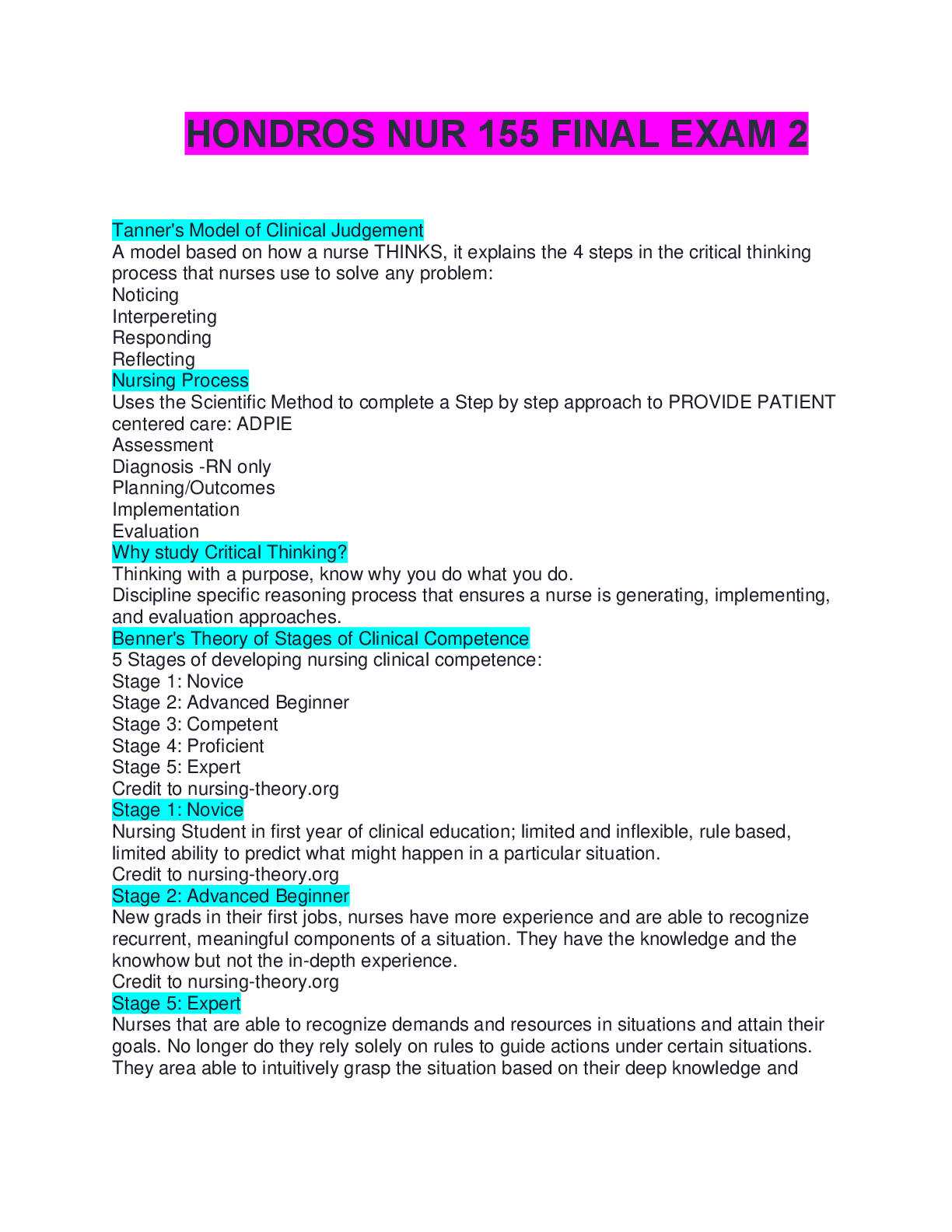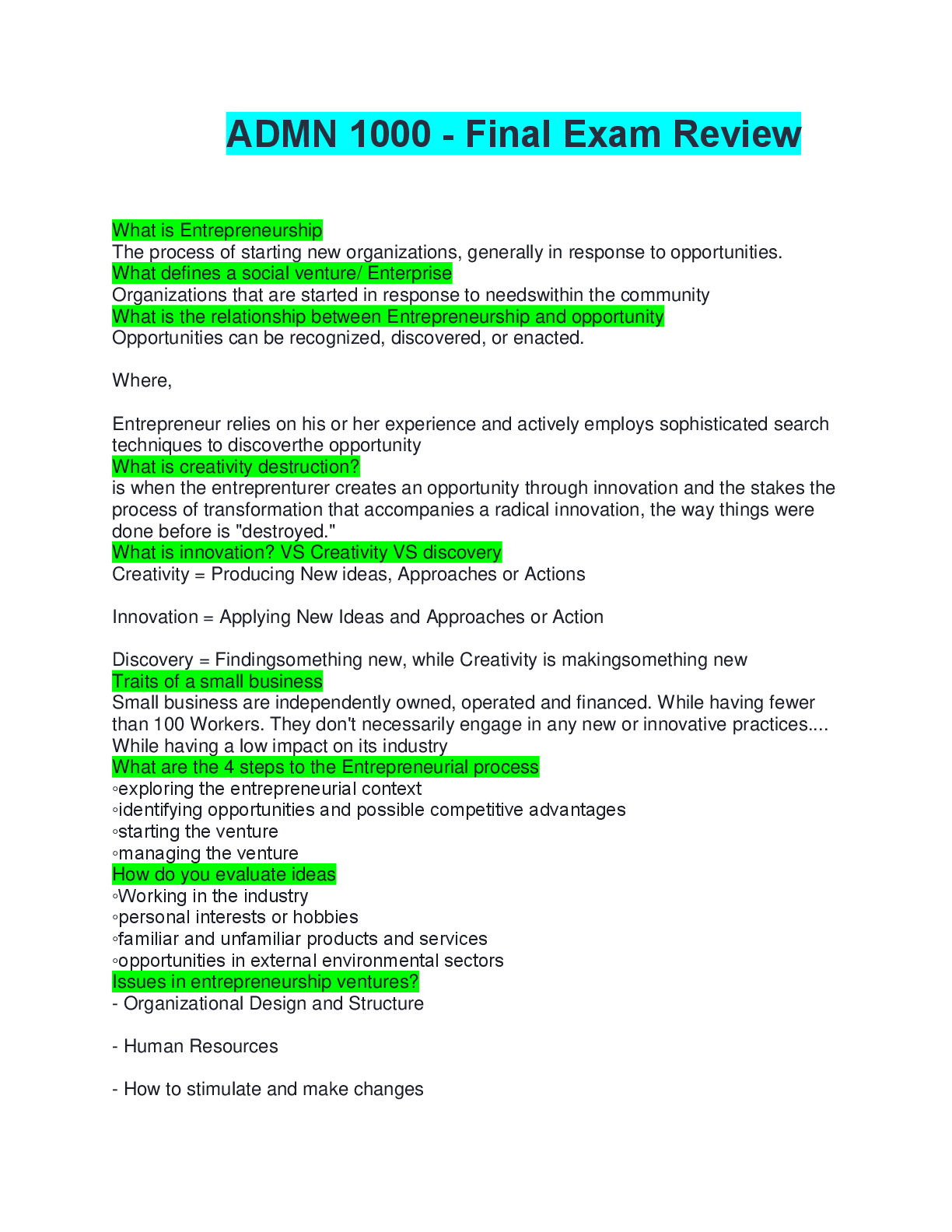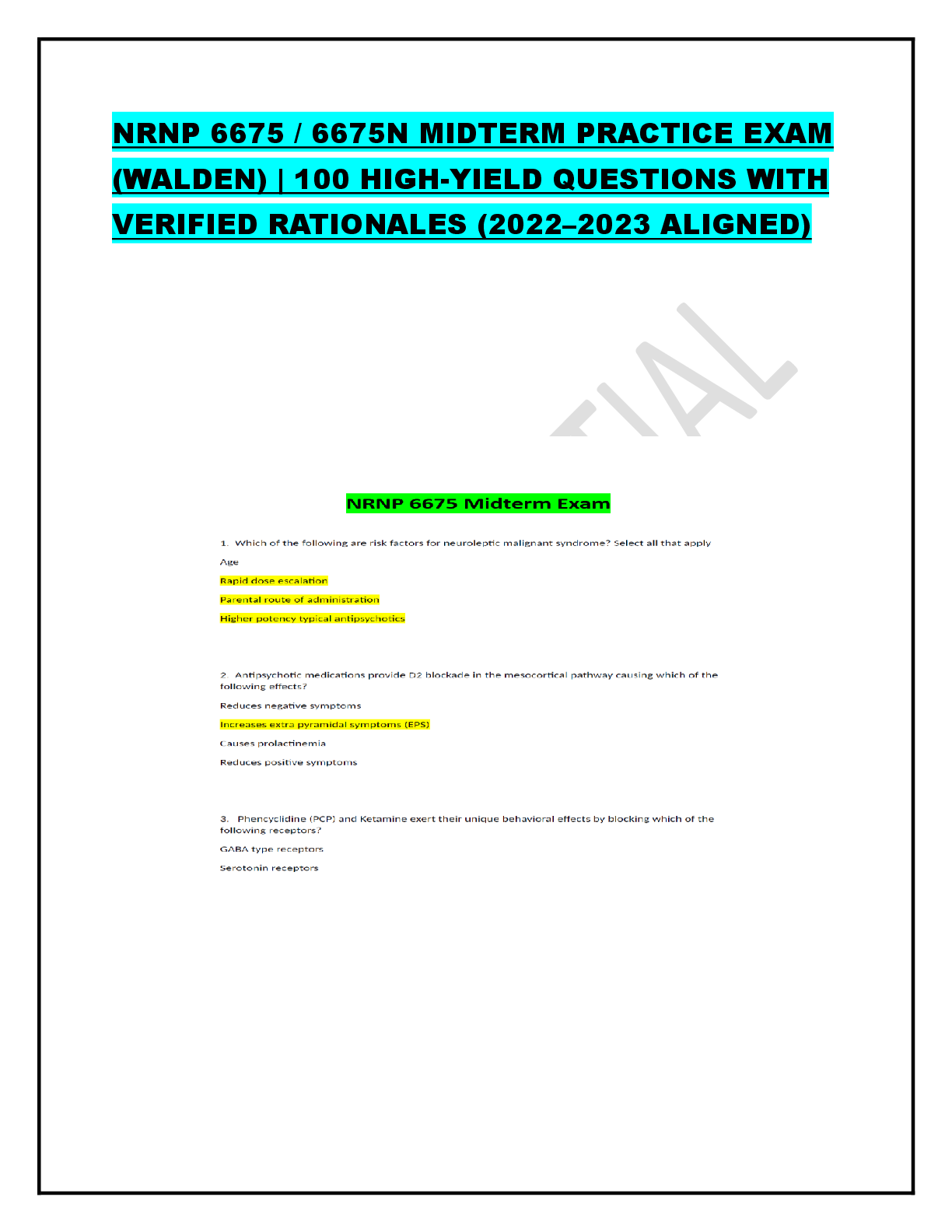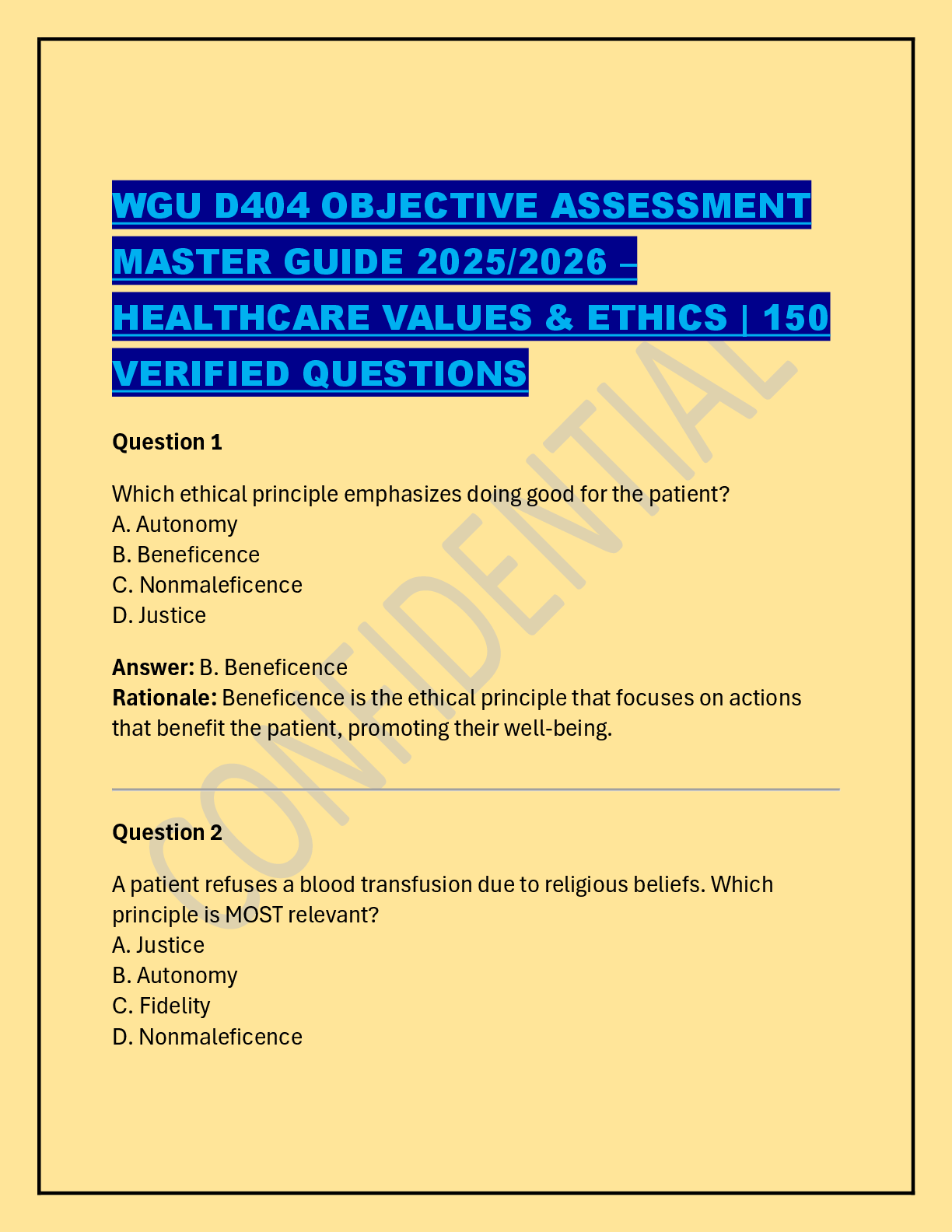Urinary Elimination Practice Questions - Answered with Rationales
Document Content and Description Below
Urinary Elimination Practice Questions - Answered with Rationales 1. If obstructed, which component of the urination system would cause peristaltic waves? a. Kidney b. Ureters c. Bladder d. Urethra ... Ureters drain urine from the kidneys into the bladder; if they become obstructed, peristaltic waves attempt to push the obstruction into the bladder. The kidney, bladder, and urethra do not produce peristaltic waves. Obstruction of both bladder and urethra typically does not occur. 2. When reviewing laboratory results, the nurse should immediately notify the health care provider about which finding? a. Glomerular filtration rate of 20 mL/min b. Urine output of 80 mL/hr c. pH of 6.4 d. Protein level of 2 mg/100 mL Normal glomerular filtration rate should be around 125 mL/min; a severe decrease in renal perfusion could indicate a life-threatening problem such as shock or dehydration. Normal urine output is 1000 to 2000 mL/day; an output of 30 mL/hr or less for 2 or more hours would be cause for concern. The normal pH of urine is between 4.6 and 8.0. Protein up to 8 mg/100 mL is acceptable; however, values in excess of this could indicate renal disease. 3. A patient is experiencing oliguria. Which action should the nurse perform first? a. Increase the patient's intravenous fluid rate. b. Encourage the patient to drink caffeinated beverages. c. Assess for bladder distention. d. Request an order for diuretics. The nurse first should gather all assessment data to determine the potential cause of oliguria. It could be that the patient does not have adequate intake, or it could be that the bladder sphincter is not functioning and the patient is retaining water. Increasing fluids is effective if the patient does not have adequate intake, or if dehydration occurs. Caffeine can work as a diuretic but is not helpful if an underlying pathology is present. An order for diuretics can be obtained if the patient was retaining water, but this should not be 4. A patient requests the nurse's assistance to the bedside commode and becomes frustrated when unable to void in front of the nurse. The nurse understands the patient's inability to void because a. Anxiety can make it difficult for abdominal and perineal muscles to relax enough to void. b. The patient does not recognize the physiological signals that indicate a need to void. c. The patient is lonely, and calling the nurse in under false pretenses is a way to get attention. d. The patient is not drinking enough fluids to produce adequate urine output. Attempting to void in the presence of another can cause anxiety and tension in the muscles that make voiding difficult. The nurse should give the patient privacy and adequate time if appropriate. No evidence suggests that an underlying physiological or psychological condition exists. 5. The nurse knows that indwelling catheters are placed before a cesarean because a. The patient may void uncontrollably during the procedure. b. A full bladder can cause the mother's heart rate to drop. c. Spinal anesthetics can temporarily disable urethral sphincters. d. The patient will not interrupt the procedure by asking to go to the bathroom. Spinal anesthetics may cause urinary retention due to the inability to sense or carry out the need to void. The patient is more likely to retain urine, rather than experience uncontrollable voiding. With spinal anesthesia, the patient will not be able to ambulate during the procedure. A full bladder has no impact on the pulse rate of the mother. 6. The nurse knows that urinary tract infection (UTI) is the most common health care-associated infection because a. Catheterization procedures are performed more frequently than indicated. b. Escherichia coli pathogens are transmitted during surgical or catheterization procedures. C. Perineal care is often neglected by nursing staff. D. Bedpans and urinals are not stored properly and transmit infection. E. coli is the leading pathogen causing UTIs; this pathogen enters during procedures. Sterile technique is imperative to prevent the spread of infection. Frequent catheterizations can place a patient at high risk for UTI; however, infection is caused by bacteria, not by the procedure itself. Perineal care is important, and buildup of bacteria can lead to infection, but this is not the greatest cause. Bedpans and urinals may become bacteria ridden and should be cleaned frequently. Bedpans and urinals are not inserted into the urinary tract, so they are unlikely to be the primary cause of UTI. [Show More]
Last updated: 2 years ago
Preview 1 out of 14 pages

Buy this document to get the full access instantly
Instant Download Access after purchase
Buy NowInstant download
We Accept:

Reviews( 0 )
$15.00
Can't find what you want? Try our AI powered Search
Document information
Connected school, study & course
About the document
Uploaded On
Oct 06, 2023
Number of pages
14
Written in
All
Additional information
This document has been written for:
Uploaded
Oct 06, 2023
Downloads
0
Views
152


